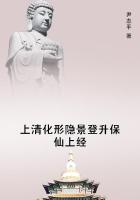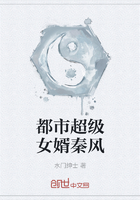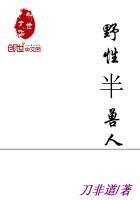So now we know the economic position of the three different classes at the beginning of the movement set out in the Tableau.
The productive class, after its working capital has been replaced in kind, still has three milliards of the gross product of agriculture and two milliards in money. The landlord class appears only with its rent claim of two milliards on the productive class. The sterile class has two milliards in manufactured goods. Circulation passing between only two of these three classes is called imperfect by the physiocrats; circulation which takes place between all three classes is called perfect.
Now for the economic Tableau itself.
First (imperfect) Circulation: The farmers pay the landlords the rent due to them with two milliards of money, without receiving anything in return. With one of these two milliards the landlords buy means of subsistence from the farmers, to whom one-half of the money expended by them in the payment of rent thus returns.
In his Analyse du Tableau économique Quesnay does not make further mention of the state, which receives two-sevenths, or of the Church, which receives one-seventh, of the land rent, as their social roles are generally known. In regard to the landlord class proper, however, he says that its expenditure (in which that of all its retainers is included)is at least as regards the great bulk of it .unfruitful expenditure, with the exception of that small portion which is used "for the maintenance and improvement of their lands and the raising of their standard of cultivation".
But by "natural law" their proper function consists precisely in "provision for the good management and expenditure for the maintenance of their patrimony in good repair", or, as is explained further on, in ****** the avances foncieres , that is, outlays for the preparation of the soil and provision of all equipment needed by the farms, which enable the farmer to devote his whole capital exclusively to the business of actual cultivation.
Second (perfect) Circulation: With the second milliard of money still remaining in their hands, the landlords purchase manufactured goods from the sterile class, and the latter, with the money thus obtained, purchases from the farmers means of subsistence for the same sum.
Third (imperfect) Circulation: The farmers buy from the sterile class, with one milliard of money, a corresponding amount of manufactured goods; a large part of these goods consists of agricultural implements and other means of production required in agriculture. The sterile class returns the same amount of money to the farmers, buying raw materials with it to the value of one milliard to replace its own working capital.
Thus the two milliards expended by the farmers in payment of rent have flowed back to them, and the movement is closed. And therewith also the great riddle is solved:
"what becomes of the net product, which has been appropriated as rent, in the course of the economic circulation?" {110.}
We saw above that at the starting-point of the process there was a surplus of three milliards in the hands of the productive class. Of these, only two were paid as net product in the form of rent to the landlords. The third milliard of the surplus constitutes the interest on the total invested capital of the farmers, that is, ten per cent on ten milliards. They do not receive this interest -- this should be carefully noted -- from circulation;it exists in natura in their hands, and they realise it only in circulation, by thus converting it into manufactured goods of equal value.
If it were not for this interest, the farmer -- the chief agent in agriculture -- would not advance the capital for investment in it. Already from this standpoint, according to the physiocrats, the appropriation by the farmer of that portion of the agricultural surplus proceeds which represents interest is as necessary a condition of reproduction as the farmer class itself; and hence this element cannot be put in the category of the national "net product" or "net income"; for the latter is characterised precisely by the fact that it is consumable without any regard to the immediate needs of national reproduction. This fund of one milliard, however, serves, according to Quesnay, for the most part to cover the repairs which become necessary in the course of the year, and the partial renewals of invested capital; further, as a reserve fund against accidents, and lastly, where possible, for the enlargement of the invested and working capital, as well as for the improvement of the soil and extension of cultivation.
The whole process is certainly "fairly ******" {110}. There enter into circulation: from the farmers, two milliards in money for the payment of rent, and three milliards in products, of which two-thirds are means of subsistence and one-third raw materials; from the sterile class, two milliards in manufactured goods. Of the means of subsistence amounting to two milliards, one half is consumed by the landlords and their retainers, the other half by the sterile class in payment for its labour. The raw materials to the value of one milliard replace the working capital of this latter class. Of the manufactured goods in circulation, amounting to two milliards, one half goes to the landlords and the other to the farmers, for whom it is only a converted form of the interest, which accrues at first hand from agricultural reproduction, on their invested capital. The money thrown into circulation by the farmer in payment of rent flows back to him, however, through the sale of his products, and thus the same process can take place again in the next economic year.
And now we must admire Herr Dühring's "really critical" {D.















